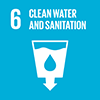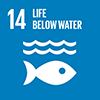Description/achievement of initiative
The accelerated use of nitrogen and phosphorous is at the centre of a complex web of development benefits and environmental problems. They are key to crop production and half of the world’s food security is dependent on nitrogen and phosphorous fertilizer use. But excess nutrients from fertilizers, fossil fuel burning, and wastewater from humans, livestock, aquaculture and industry lead to air, water, soil and marine pollution, with loss of biodiversity and fish, destruction of ozone and additional global warming potentialThe problems will intensify as the demand for food and bio-fuels increase, and growing urban populations produce more wastewater. This will be at a growing economic cost to countries in the undermining of ecosystems, notably in the costal zone, and the services and jobs they provide.The Global Partnership on Nutrient Management (GPNM) is a response to this ‘nutrient challenge’ – how to reduce the amount of excess nutrients in the global environment consistent with global development. The GPNM reflects a need for strategic, global advocacy to trigger governments and stakeholders in moving towards lower nitrogen and phosphorous inputs to human activities. It provides a platform for governments, UN agencies, scientists and the private sector to forge a common agenda, mainstreaming best practices and integrated assessments, so that policy making and investments are effectively ‘nutrient proofed’. The GPNM also provide a space where countries and other stakeholders can forge more co-operative work across the variety of international & regional fora and agencies dealing with nutrients, including the importance of assessment work.
Implementation methodologies
The work of the GPNM is clustered into four (4) key areas;
(1) Contribution to development of knowledge (policy & technical) products to inform decision making amongst policy makers, professionals, farmers, private sector;
(2) Provision of support for piloting and replication of appropriate pilot solutions and BMPs for sustainable nutrient management and pollution reduction with focus on developing countries, sharing lessons from developed countries;
(3) Generation of awareness resources and social marketing tools and facilitating easy dissemination (via the GPNM platform and other ICT tools) to influence farmers, extensionists, policy makers and other stakeholders to drive change in behaviors and practice; and
(4) Contribution to continued strengthening of the GPNM to facilitate expanded global and regional partnerships, particularly through Regional-level Nutrient Management Platforms.
Regional GPNM Platforms are envisaged for the major global regions of the world namely, Asia; Africa; Europe; Caribbean; Latin America; North America; Pacific. The GPNM Asia Platform was launched in June 2010 in Delhi, India in partnership with the International Nitrogen Initiative (INI) South Asia chapter. Follow-up meetings were held November 2011 in Beijing, China, co-hosted with the China Agricultural University of Beijing and in November 2015 at the East Asia Seas Congress in partnership with the Partnerships in Environmental Management for the Seas of East Asia (PEMSEA). The GPNM Caribbean Platform was launched in May 2013 in Trinidad and Tobago in partnership with the Institute for Marine Affairs of Trinidad and Tobago and the Secretariat of Cartagena Convention, Caribbean Environment Program Regional Coordination Unit. A follow-on meeting was held in February 2016 with the same partners.
Arrangements for Capacity-Building and Technology Transfer
The following constitutes the 4 key work elements of the GPNM as guided by national, regional and international frameworks, driven by priorities in addressing the nutrient challenge.
1. Knowledge generation
• Build knowledge through sharing of lessons learned to assist governments and other stakeholders in the analyses of policies, develop business models and choose technological options for sustainable production and use of nutrients;
• Create/develop a global knowledge-base on policy experiences and ways to adapt such experiences to specific national circumstances and make it available to all stakeholders through web-based tools;
• Identify key research needs that would fill gaps in knowledge and foster/strengthen integrated assessment and analysis to generate new knowledge;
• Develop indicators to assess progress towards globally agreed tragets (e.g., Achi traget 8, GPA/IGR-3 declaration, Rio+20 outcomes etc.).
2. Extension and technical services
• Facilitate and/or develop new approaches and projects to complement governments’ efforts to reform/develop policy frameworks as a necessary foundation for sustainable nutrient management;
• Set regional/national specific targets on NUE, nutrient load into coastal waters, and biodiversity (e.g., Achi target 8);
• Develop indicators to assess progress towards globally agreed targets (e.g., Aichi target 8, GPA/IGR-3 Manila Declaration, Rio+20 outcomes etc.);
• Secure commitments from stakeholders on regular reporting on the progress towards NUE and publishing periodic reports on progress;
• Develop/strengthen web based tools to disseminate knowledge and experiences to support stakeholder actions on the ground;
• Develop a “policy toolbox” related to managing nutrient impacts from key sources/sectors, to support national actions, especially development of nutrient reduction strategies and designing training modules and associated curriculum;
• Design training modules and associated curriculum to disseminate the key contents of the “policy toolbox”, targeting resource managers and policy makers;
• Develop eXtension (electronic extension) training programs;
• Facilitate and design of cost-effective on the ground interventions reflecting interests of the partners;
• Facilitate exchange of scientific data, methodologies and research applications among various stakeholders to support national/country-level research and extending the BMPs to the small holder farmers through eXtension, outreach and technology transfer;
• Promote activities that raise awareness and dissemination of information for enhancing capabilities of partners.
3. Outreach and advocacy
• Offer opportunities to develop networks among the members to establish and strengthen communities of practice;
• Identify, review and compile best nutrient management practices (covering cost-effective and sustainable technology and policy options) under different socio-political settings and disseminate through web and face-to-face meetings/workshops;
• Produce policy briefs, information documents and case studies to promote sustainable nutrient management;
• Hold special sessions/side events on GPNM and nutrient related issues in the margins of global and regional meetings of relevance.
4. Partnership and network development
• Hold periodic meetings of partners to share experiences and create action agendas;
• Facilitate dialogues for policy reform using in support of technological and management innovation to promote nutrient use efficiency.
Coordination mechanisms/governance structure
An international Steering Committee was formed to give structure and provide strategic guidance to GPNM. Day-to-day management and administration of the GPNM is handled by the Secretariat hosted by UNEP, acting in conformity with the guidance and decisions of the GPNM Steering Committee. GPNM Regional Platforms will be established to transfer the presence and work of the GPNM to the national level . The Regional Platforms will fall under the global GPNM, supported by the GPNM Secretariat within the UNEP’s GPA Coordination Office. Within each Regional Platform, countries will agree on the priority areas (perhaps along thematic lines) of common interest. Emphasis needs to be on building on existing initiatives, where more support is needed to realize synergistic impact and cost savings in pooling and harmonizing efforts. It is recommended that the work of the Regional Platform be planned and implemented over a five-year horizon. The UNEP Regional Seas Programmes and other non-UNEP administered programmes will be primary entry points given that they are inter-governmental mechanisms with formal governmental constituents. Support to the GPNM is embedded within UNEP’s Program of Work.
Partner(s)
UNEP, GEF







 Time-frame: 2012 - ongoing
Time-frame: 2012 - ongoing